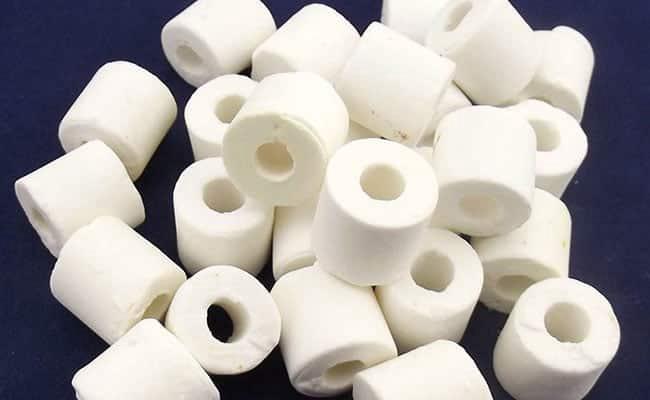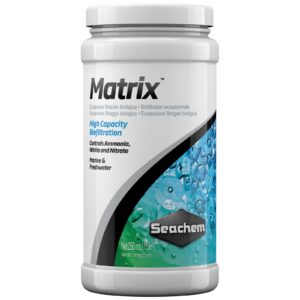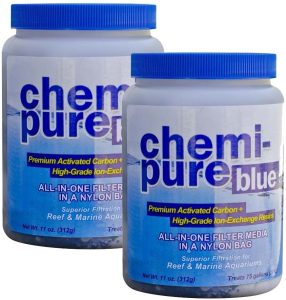What order should my filter media be in?
One of the most important parts of the aquarium hobby is filtration and filter media. Understanding how your media is supposed to work helps to determine the order your filter media should be inside your filters. So what order should my filter media be in?
The order of filter media, no matter what type of filtration system you have, is always the same. It starts with Mechanical filtration, then Biological filtration, and finally Chemical filtration in that order.
Why is Filter Media in this order?
This is easier explained in the reverse order. Chemical filtration is adding a form or forms of chemicals to your water before leaving your filter and returning to your tank. These chemicals can disturb the growth of beneficial bacteria on your Biological filtration.
Chemical Media will absorb the organic waste that produces ammonia. Ammonia is what your beneficial bacteria need in order to live and grow in your tank. You want all the ammonia your fish produce to reach your bio-media so you can grow a healthy amount of beneficial bacteria which will keep your tank cycled and safe for your fish.
So Chemical filtration is done AFTER the biological filtration. Your biological filtration uses biological media that has tons of tiny pores where beneficial bacteria grow in/on.
These pores can easily be clogged with waste, uneaten food, dirt/dust, and other particles in your water eliminating essential surface area for beneficial bacteria. This is why water is biologically filtered AFTER it has been Mechanically filtered.
What does Mechanical Media do?
Water is mechanically filtered first to remove waste, uneaten food, and general detritus particles from your water. This section of filtration helps in achieving a crystal clear look to your tank water. Any detritus not removed from your tank water will create ammonia which is very toxic for your fish.
Mechanical media is usually in the form of sponges that come in different size thicknesses. A thick course sponge should be used first to capture the biggest particles. Then a medium sponge will catch some smaller particles that made their way through the previous sponge.
Finally, a fine sponge, also called a polishing pad, or polishing sponge, should be used last to catch the tiniest of particles which will leave your water looking crystal clear. These sponges placed in this order will complete your mechanical filtration.
What does Biological Media do?
The best place with oxygenated water and flow is inside your filter. Biological media (Bio-Media) is any type of material with a very porous surface area. By adding this bio-media in your filter it amplifies the amount of surface area available for this beneficial bacteria to grow on.
As water with Ammonia and Nitrite passes over this media beneficial bacteria will begin to grow. This bio-media should only be cleaned using tank water, as the chlorine in tap water will kill your bacteria.
Cleaning should consist of simply rinsing them off, in tank water. Your Bio-media does not need to be replaced unless it is clogged and no longer has a surface area for bacteria to grow on. With proper mechanical filtration, your bio-media should not get clogged.
What does Chemical Media do?
Chemical media removes dissolved particles and organic waste from your tank water by absorbing them through activated carbons, resins, and other adsorbents. Chemical filtration will also absorb any medications used in your tank once it is no longer required.
But your chemical media does have an absorption capacity. Once full it will begin to release these organics back into your water. This is why removing and replacing your chemical media when it can not absorb any more organics is important.
Chemical media is not used as often as biological or mechanical media but helps to maintain water quality and can also aid in achieving crystal-clear water.
Here’s a great short video of my 150G tank before and after installing chemical Media – Adding Chemi-Pure Blue to 150G Tank
What Order Should My Filter Media Be In a Canister (Fluval 407)
Here’s a simple setup video for your reference on what order your media should be in.
The Fluval FX6 Media Exception
In a Fluval FX6 or any other FX series filter, we have to discuss an exception to the rule. Basically because of its specific design. In the FX6 water flows differently than in most canister filters.
Water flows from bottom to top around the outside, but then goes from top to bottom down the middle of the canister. Water is then sent back to the tank from the bottom of the filter.
This is very important information to understand about the FX6. Even though the order of media wouldn’t normally change you’ll be stacking it from the top down. This means your mechanical media will be on top, then bio-media below it, and finally chemical media at the bottom.
The problem with this is that chemical media must be replaced much more frequently than the canister is going to need a full cleaning. This is why we have an exception to the rule.
Through experience and continued learning from veterans of the hobby I can advocate for changing the order of media in the FX6. In the FX6 the order of media will be Mechanical, Chemical, Bio media.
For the simple fact that placing both your fine mechanical media and chemical media in the top tray of your FX series canister, you will be able to easily and efficiently remove and replace both. Since they are replaced more frequently, having easy access to them without disturbing your entire filter (By having to pull all the trays out of the housing) is better for you, the maintainer, and for the fish and their quality of water.
During filter cleanings, we always want to preserve as much beneficial bacteria as possible. This order of media in an FX6 makes it possible.
While you may assume the chemical media before the bio media may affect the growth of beneficial bacteria, it won’t. An FX6 is normally kept on big tanks with big and/or many fish. These tanks will produce PLENTY of ammonia.
There will always be enough ammonia available in the filter for beneficial bacteria to feed on and grow regardless of where the chemical media is placed.
Below is a detailed video on how I set this up properly in an FX6. Plus a, not so commonly known form of bio-media, Pot Scrubbers!
What are the best types of filter media on the market?
Bio-Media
Seachem Matrix
Seachem Matrix is a highly porous media designed to provide exceptionally efficient biofiltration for single-site removal of ammonia, nitrite, and nitrate from freshwater, marine, and reef aquaria.
Each liter of Matrix provides over 160,000 cm2 (170 sq. Ft.) of surface, equivalent to over 40 L (10 gallons) of typical plastic ball media.
Fluval BioMax
Fluval BIOMAX bio rings have a complex pore system creating an optimal environment where beneficial bacteria can thrive.
BIOMAX bio rings have more capacity than most biological filter media and allow ideal water movement throughout the media to ensure optimal contact time for efficient biological filtration for freshwater and marine environments.
Pot Scrubbers for Bio Media
Pot Scrubbers are not a very commonly used form of bio-media. Not many in the hobby know about how well they work. I can assure you, they do!
The best part is they are the cheapest form of bio media on the market. They are not advertised as bio-media because they are very cheap, and yet, they keep your tank cycled and your water crystal clear just as much as all the expensive stuff, who knew?
If you skipped the video above make sure to check it out for more info. Or Watch Here!
Chemical Media
Marineland Activated Carbon
Marineland Premium Activated Carbon removes more discoloration, odors, and impurities compared to our next leading competitor according to a 2015 University study.
Use this premium activated carbon for sparkling clean water that helps create the aquarium of your dreams.
Marineland Black Diamond Media Premium Activated Carbon is ideal for all aquarium filters and is specifically sized to be more efficient.
Seachem Purigen
Seachem Purigen is a premium synthetic adsorbent that is unlike any other filtration product. It is not a mixture of ion exchangers or adsorbents, but a unique macro-porous synthetic polymer that removes soluble and insoluble impurities from water at a rate and capacity that exceeds all others by over 500%.
Purigen controls ammonia, nitrites, and nitrates by removing nitrogenous organic waste that would otherwise release these harmful compounds. Purigen’s impact on trace elements is minimal. It significantly raises redox. It polishes water to unparalleled clarity.
Chemi-pure blue
Chemi-pure blue is specially created for fantastic results in reef and marine aquariums. Our NEW proprietary blend of premium, low-dust pelleted carbon and high-capacity ion-exchange resins are skillfully combined to create a superior all-in-one filter media in a nylon bag.
Chemi-pure Blue significantly reduces organic compounds and phosphates while raising redox and helping stabilize pH for a healthy, crystal-clear aquarium.
More Recommended Products and Equipment For Your Aquarium
I only recommend products that I currently use in my tanks to maintain a beautiful-looking tank as well as a happy healthy home for my fish.
You can find them all in my Amazon Affiliate Shop! Happy Shopping!
Ever Consider African Cichlids?
If you’re new to African Cichlids or you’ve been considering keeping your very own I have a Webinar Training with the Top 3 Secrets to Successfully Keeping African Cichlids…and it’s Free!
Click the link above to register now or watch a quick intro video below!













